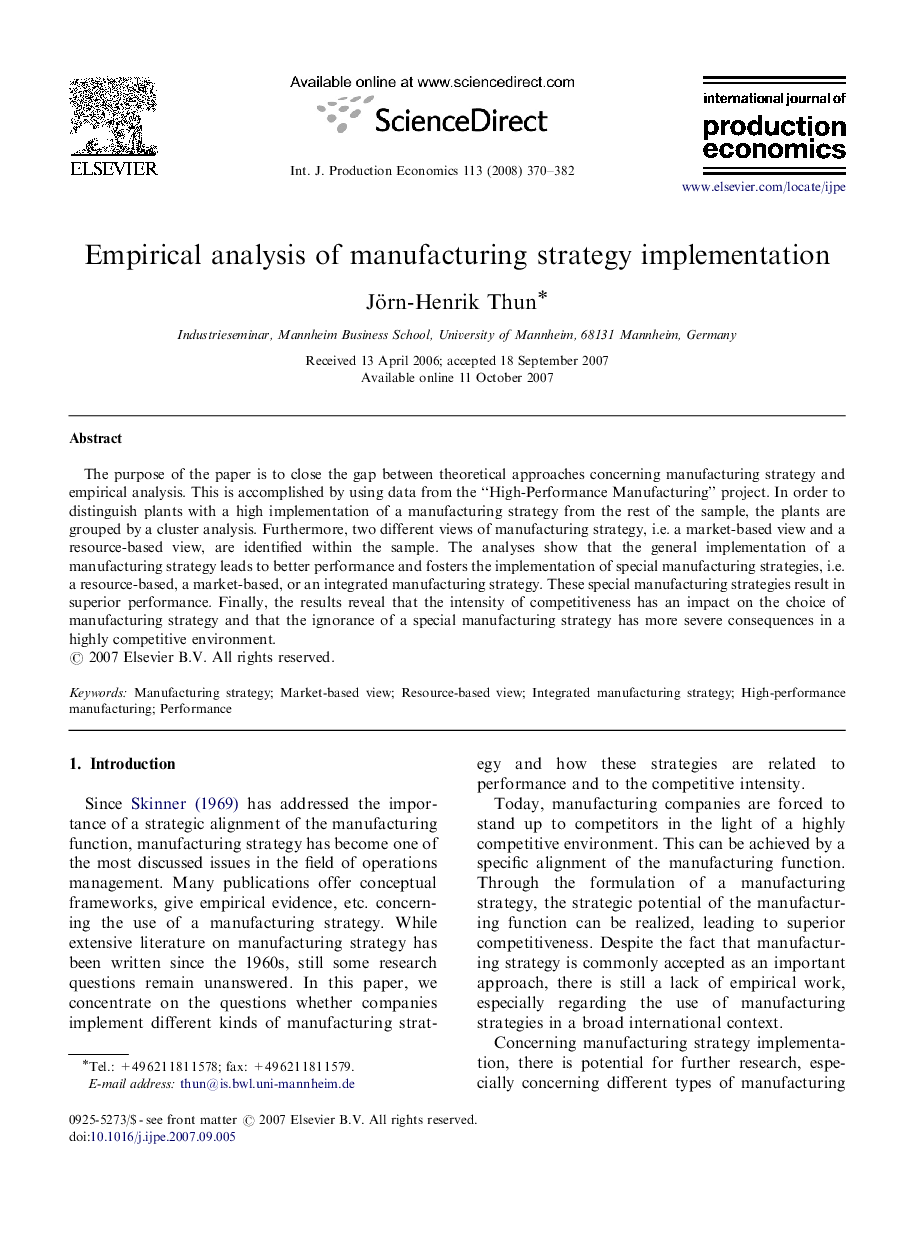| Article ID | Journal | Published Year | Pages | File Type |
|---|---|---|---|---|
| 5082291 | International Journal of Production Economics | 2008 | 13 Pages |
Abstract
The purpose of the paper is to close the gap between theoretical approaches concerning manufacturing strategy and empirical analysis. This is accomplished by using data from the “High-Performance Manufacturing” project. In order to distinguish plants with a high implementation of a manufacturing strategy from the rest of the sample, the plants are grouped by a cluster analysis. Furthermore, two different views of manufacturing strategy, i.e. a market-based view and a resource-based view, are identified within the sample. The analyses show that the general implementation of a manufacturing strategy leads to better performance and fosters the implementation of special manufacturing strategies, i.e. a resource-based, a market-based, or an integrated manufacturing strategy. These special manufacturing strategies result in superior performance. Finally, the results reveal that the intensity of competitiveness has an impact on the choice of manufacturing strategy and that the ignorance of a special manufacturing strategy has more severe consequences in a highly competitive environment.
Related Topics
Physical Sciences and Engineering
Engineering
Industrial and Manufacturing Engineering
Authors
Jörn-Henrik Thun,
